Christus Victor (and the Atonement of The Chronicles of Narnia)
Gustav Aulén, Aslan, and a so-called "classic" view of the atonement
A Swedish bishop named Gustaf Emanuel Hildebrand Aulén wrote a book called Christus Victor (“Christ the Victor”) in 1931. It has helped shape contemporary discussion of the atonement.
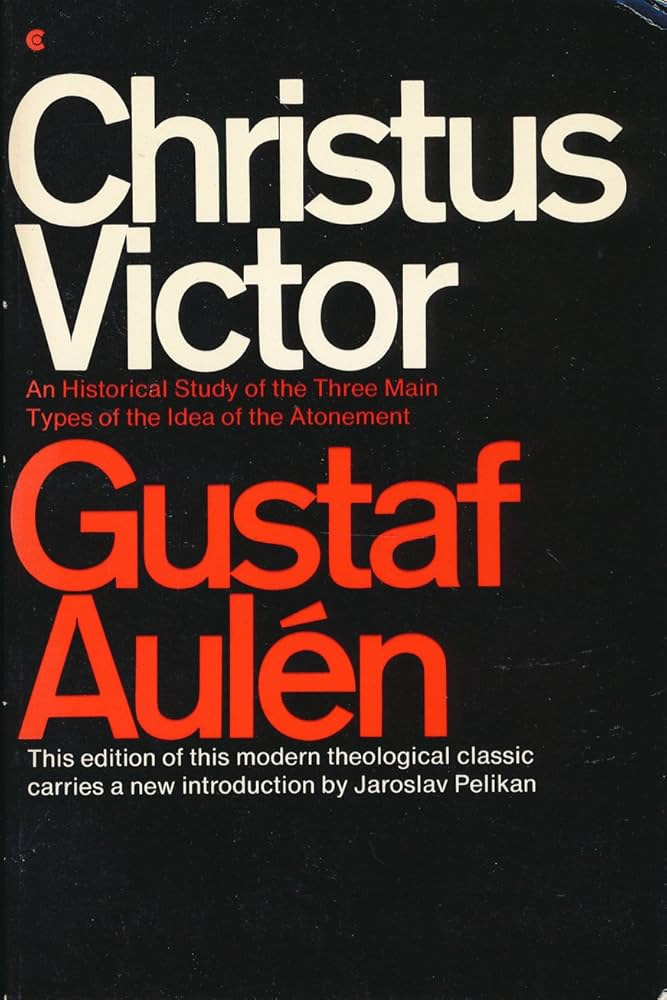
Christus Victor is similar to ransom theory (and dissimilar to penal substitution) in that sacrifice of Jesus is not seen as a payment to God.
But it diverges from ransom theory by downplaying the idea that Christ was primarily a “payment” to satan. Instead, Christus Victor positions the life, death, and resurrection of Jesus as the defeat of evil. It is freedom for humanity in Jesus.
Here’s how Aulén summarizes his view of the central aim of Jesus on The Cross:
"The work of Christ is first and foremost a victory over the powers which hold mankind in bondage: sin, death, and the devil.” [Aulen, Christus Victor]
Who Was Gustav Aulén?
Gustav Aulén was born in 1879 and died in 1977. He was a Lutheran theologian and a bishop in the Church of Sweden.
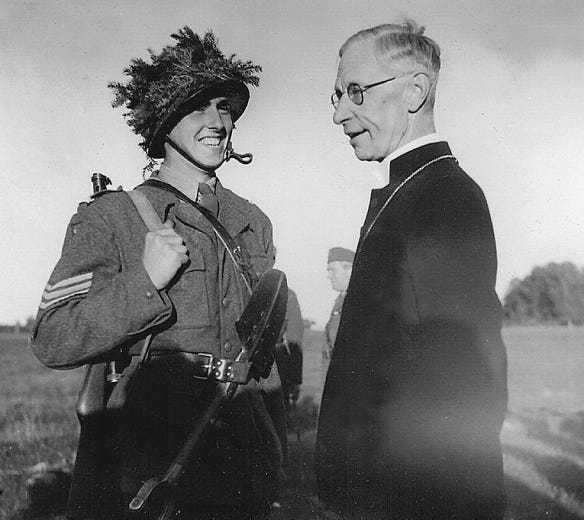
His theological views were informed by an embrace of orthodox (little “o”) Christian views and a deep appreciation for Martin Luther.
He was a member of the “Lundesenian” (from the city of Lund, in Sweden) school of thought. It was deeply conservative perspective that was also responsive to liberal views.
Here’s a description from the Boston Collaborative Encyclopedia of Western Theology.
Lundensian theology emerged from…[a] profound conservatism with the equally profoundly disturbing currents of nineteenth century liberalism. It was, by virtue of the nature of its leading figures, a joint attempt by church and academy both to preserve what had always been felt to be the deepest and best values of Christianity, and to respond constructively to the critiques which lay at the heart of liberal thought: critiques from history, literary criticism, psychology, sociology, history of religions, science and philosophy. [Lundensian theology, source]
Aulén believed that the early Christian leaders and theologians were most attuned to ransom atonement themes. But Aulen saw the atonement as more nuanced than that, and advocated for a reinterpreted version.
He called it the “classic” theory of the atonement.
His articulation of the “classic view” is called Christus Victor (“Christ the Victor”), after the name of his book.
Christus Victor and Reframing Atonement Theories
In his book, Aulén separates historical Atonement views into three broad categories:
The “objective” view
The “subjective” view
The “classic” view
Here’s a quick recap of those views.
The Objective View: Satisfaction and Penal Substitutionary Atonement
Aulén defined the objective view as most clearly articulated by Anselm of Canterbury’s satisfaction theory.
It’s this same objective view that was later modified by Reformation figures like John Calvin into what we now call penal substitutionary atonement (PSA).

Jesus paid the penalty of sin to God on our behalf with His death on the cross.
The Subjective View: Moral Influence
The subjective view is also called the “moral influence theory.”
It was pioneered by Peter Abelard (1079 - 1142). The central idea is that humans can change simply by being inspired by the great moral example of Jesus.
Instead of viewing Jesus on The Cross as an effective sacrifice, Abelard believed “Jesus died as the demonstration of God's love." And following that example can turn humanity back to God.
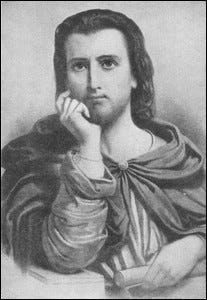
It’s not something I’ve written about here because it rejects that something truly efficacious *happened* on the cross.
Abelard’s views were deemed heterodox by his Christian contemporaries and he was excommunicated. Yet the influence of moral influence has remained in many churches, particularly those who reject the idea that humanity is inherently sinful and needs outside salvation.
The Classic View: Ransom Theory → Christus Victor
The classic view is a reinterpreted version of the ransom theory.
Unlike a simplistic understanding of ransom theory, Aulén rejected the idea that the death of Christ was a literal payment paid to the devil for the redemption of humanity. Instead, he emphasized the victory of Jesus on the cross over the evil of the world.
Through this victory, God reconciles the whole world to Himself.
Its central theme is the idea of the Atonement as a Divine conflict and victory; Christ – Christus Victor – fights against and triumphs over the evil powers of the world, the 'tyrants' under which mankind is in bondage and suffering, and in Him God reconciles the world to Himself. [Aulén, Christus Victor]
The Argument for Christus Victor
Aulén argued for Christus Victor by claiming it best represents how God moves out towards humanity in order to reestablish relationship.
He critiqued moral influence (the subjective view) for relying too much on the work of humanity. The Cross is diminished of its power if it’s only an example for humans to look to.
He also found the satisfaction view (the objective view) lacking for emphasizing the service that Christ provided on The Cross, while God the Father stands at a distance.
Instead, he argued that the classic view best demonstrates the movement of God to man.
The classic type showed us the Atonement as a movement of God to man, and God as closely and personally engaged in the work of man’s deliverance. In the Latin type [objective] God seems to stand more at a distance; for the satisfaction is paid by man, in the person of Christ, to God. In the third type [subjective, moral influence] God stands still more at a distance; as far as He is concerned, no atonement is needed, and all the emphasis is on man’s movement to God, on that which is accomplished in the world of men. That is to say, the essential Christian idea of a way of God to man, which dominates the classic type, is weakened in the Latin type, and lost in the subjective type, in the measure that its leading idea is consistently carried out.” [Aulén, Christus Victor]
Aulén saw this kind of atonement as best explaining his view of salvation.
He didn’t see salvation as a one time legal transaction, but as an ongoing life of fellowship with God and defeat of the powers of evil.
“We have also here the explanation of his constant emphasis on salvation as a bestowal of Life. Life means for him primarily fellowship with God, the partaking of the life of God, and therefore also a deliverance from sin.” [Aulén, Christus Victor]
We can see a narrative take on Christus Victor in the first book that C.S. Lewis wrote in The Chronicles of Narnia.
Atonement Theory in The Lion, the Witch, and the Wardrobe
C.S. Lewis wrote The Lion, the Witch and the Wardrobe in 1950.
At the end of the book, the Christ-like Aslan willingly lays down his life for the traitorous Edmund. The same Edmund who had sold out his siblings to the satanic White Witch, and had been in her clutches since.
The Witch greedily accepts Aslan’s offer to exchange his own life for the life of the boy, eager for the chance to kill such a fearsome adversary on the Stone Table.
This is the basic ransom idea of the atonement. Ultimate evil receives a “payment” from the Ultimate Good, so that humanity can go free.
But in her evil and greed, the witch doesn’t appreciate that the conditions of the exchange will be her own downfall.
She kills him, but death can’t hold Aslan.
After he is resurrected, he explains the meaning of what happened to the amazed human children.
“It means,” said Aslan, “that though the Witch knew the Deep Magic, there is a magic deeper still which she did not know. Her knowledge goes back only to the dawn of time. But if she could have looked a little further back, into the stillness and the darkness before Time dawned, she would have read there a different incantation. She would have known that when a willing victim who had committed no treachery was killed in a traitor’s stead, the Table would crack and Death itself would start working backward.” [C.S. Lewis, The Lion, the Witch and the Wardrobe]
Aslan, as the perfect and sinless sacrifice, defeats the Witch through the payment of his death. But Aslan doesn’t stop after the subversive payment has been made.
Aslan Victor
After (temporarily) killing Aslan, the White Witch and her forces of evil go to war against those loyal to Aslan. She is confident in victory after eliminating the feared lion.
But Aslan proved stronger than death. Unbeknownst to the Witch, the Table had cracked and Death itself began “working backwards.”
Upon his resurrection, Aslan first storms the White Witch’s castle. It’s where the Witch had turned so many Narnians to stone, and where they remained paralyzed in her courtyard.
Aslan breathes on them and new life enters into their bodies.
Then, Aslan and the newly resurrected army returns to the battle against the White Witch.
The forces loyal to Aslan are desperately in need of reinforcements when he arrives. But it’s a short fight from then on. Aslan leaps on the White Witch and kills her, and leads the rest of his army to victory over the forces of evil.
What Atonement Theory Did C.S. Believe in?
Despite this presentation in his writing, Lewis did not claim that ransom theory, Christus Victor, or any specific atonement theory was most essential to the Christian faith.
The specific “mechanism” of what happens at the cross are not important to him.
Here’s what he writes in Mere Christianity:
We are told that Christ was killed for us, that His death has washed out our sins, and that by dying He disabled death itself. That is the formula. That is Christianity. That is what has to be believed. Any theories we build up as to how Christ’s death did this are, in my view, quite secondary: mere plans or diagrams to be left alone if they do not help us, and, even if they do help us, not to be confused with the thing itself. [C.S. Lewis, Mere Christianity]
In the same book he also writes, “A man can eat his dinner without understanding exactly how food nourishes him. A man can accept what Christ has done without knowing how it works.”
The most important thing to Lewis was The Cross itself.
But you and I are not C.S. Lewis, so we can perhaps be excused for our curiosity regarding how various Christian faith traditions view Christus Victor.
How Christian Faith Traditions View Christus Victor
The Christus Victor view is most similar to how Orthodox Christians view the atonement. [Although if you read this Orthodox view you’ll see it’s not exactly the same.]
Protestant Christians generally believe Christus Victor to be true, but incomplete. Most Protestants believe a penal substitutionary sacrifice is the heart of the atonement.
For more Protestant views on Christus Victor, check these two links below:
What the Gospel Coalition (fellowship of Reformed evangelical churches) has to say about Christus Victor
What Protestant (although not Calvinist) theologian and philosopher William Lane Craig says in his partial agreement, partial critique of Christus Victor
Catholics also find Christus Victor to be an incomplete view, but for different reasons than Reformed view. Here’s the Catholic take, with a summarizing quote below.
Where Christus victor falls short as a theory of the atonement, is that it doesn’t explain how Christ is victorious. Well, how did he beat the devil? How did he free us from sin? And that’s where I think the satisfaction theory of atonement is better at explaining that Christ freely offered himself as a sacrifice of love to the father. [source, catholic.com]
Downsides of Atonement Theory?
As for me, I risk getting confused with “the thing itself” if I focus too much on any single atonement theory.
Ransom theory helps me understand how evil satan is and how good and generous God is.
It helps me remember what Paul writes in Ephesians 6 that the life Christian life is not one of wrestling with “flesh and blood.”
Christus Victor reminds me that Jesus is infinitely more powerful than evil and would give everything to rescue me and bring me to a new victorious life. It helps me walk in the reality of that victory. Because in Christ, “we are more than conquerors” (Romans 8:37).
But if I only consider the ransom exchange and victory in Christ, I might lose sight of my own personal responsibility for my sin before a perfectly holy and righteous God.
Penal substitutionary atonement (PSA) has the holiness, righteousness, and justice of God squarely in view. It humbles to think how desperately I need salvation and God’s grace. And it helps to instill deep gratitude for Jesus.
At the same time, PSA doesn’t focus on God running out to me to rescue me from satan. Unless I’m careful, I might not fully appreciate the mercy and extravagant love of God.
The kind of love that would make John write words like this in 1 John 3:1.
See what great love the Father has lavished on us, that we should be called children of God! And that is what we are! [1 John 3:1].
If I only think about PSA, I might sometimes feel more like a “bad” child than a “loved child.”
But the reality is I am both at once.
Christians believe we were lost and blind children who, in our blindness, had been running from a God who desperately loves us. A God who both desires us to recognize our sin and our need for Him AND is filled with extravagant compassion and mercy for us.
I Wonder…
Is it possible that some of us are more naturally wired to be able to recognize our sinfulness before a holy God? Penal atonement might be natural to understand for those of us wired like this. And we may sometimes struggle with grasping the mercy and lavish love that the Bible says God has for us.
And could it possible that there are some of us are more naturally wired to easily believe that God has a ridiculous love for us? We might love thinking about ransom theory and Christus Victor while penal atonement might seem brutal. And we may struggle with grasping the deep sinfulness that the Bible says we have on our own before an infinitely Holy God.
And if that were possible, what might that mean? It’s a question worth pondering.
Because there’s nothing that says both views can’t be true at the same time.
After all, some of the early church fathers like Augustine taught ransom theory and emphasized that Christ suffered in the place of humanity.
And there’s another place that seems to support the idea that we could benefit from both / and thinking in this area: the Old Testament.
****************
That’s next week: penal atonement and ransom theory together in Leviticus?
Last week: ransom theory and the early church
*********************
13 When you were dead in your sins and in the uncircumcision of your flesh, God made you alive with Christ. He forgave us all our sins, 14 having canceled the charge of our legal indebtedness, which stood against us and condemned us; he has taken it away, nailing it to the cross. 15 And having disarmed the powers and authorities, he made a public spectacle of them, triumphing over them by the cross. [Colossians 2: 13 - 15]



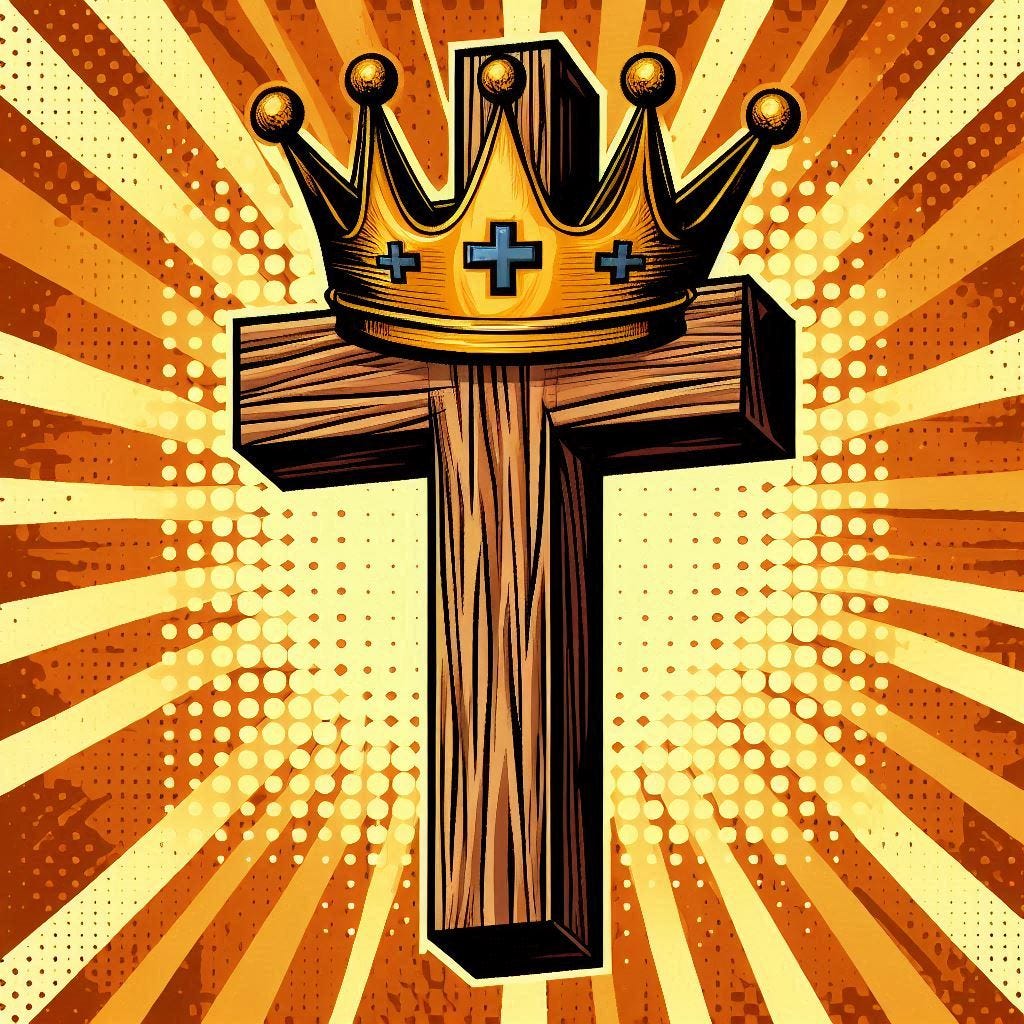
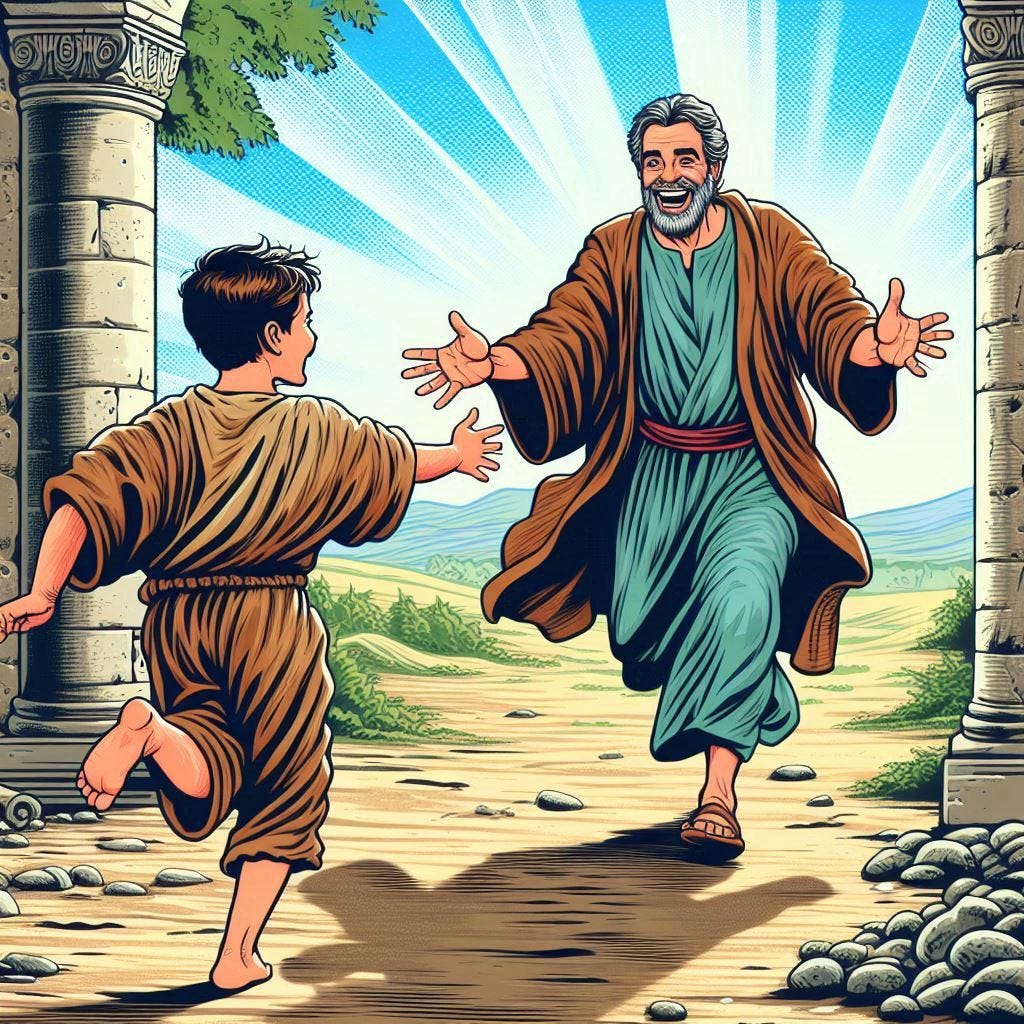
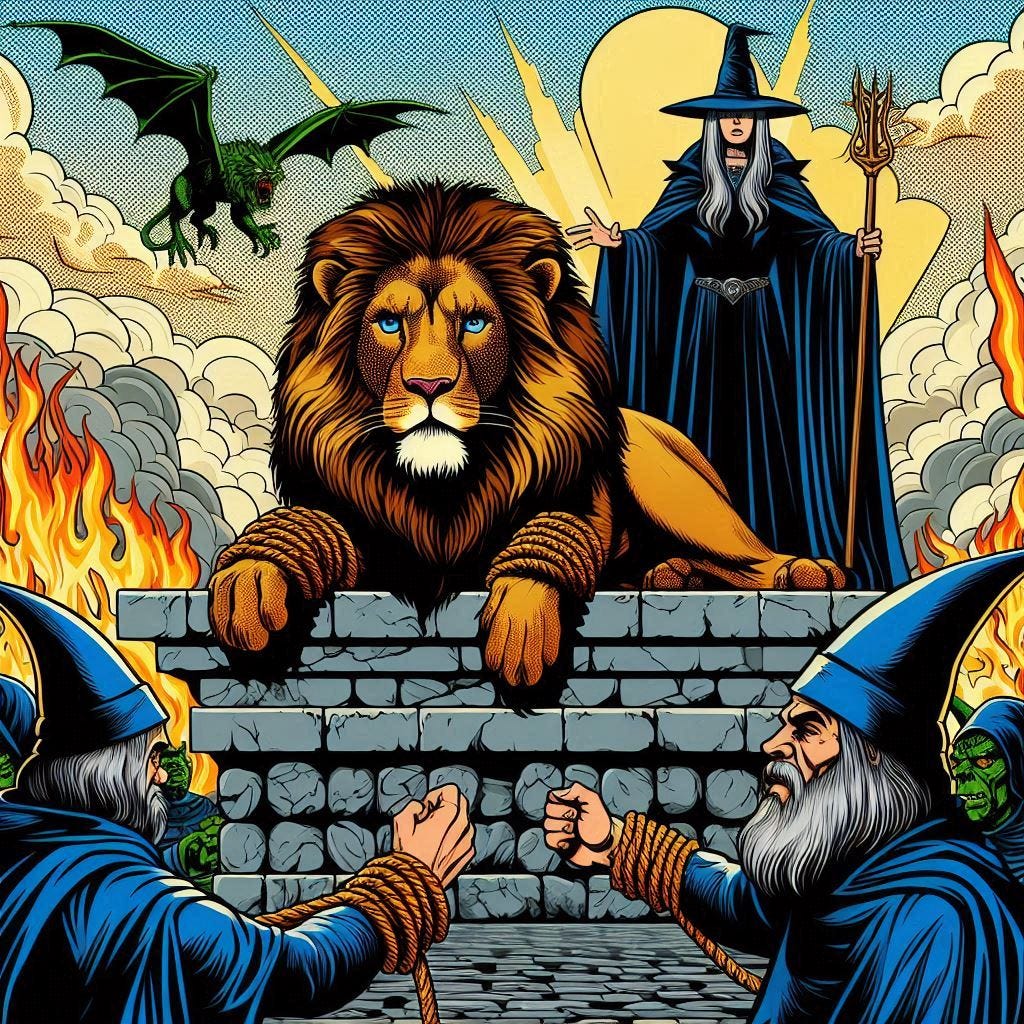




Good stuff, Zack. I wasn't familiar with this guy and his book and learned something new.
Love 1 John 3:1. As we have discussed, I think my brain really likes PSA. But my heart yearns for something like ransom theory.